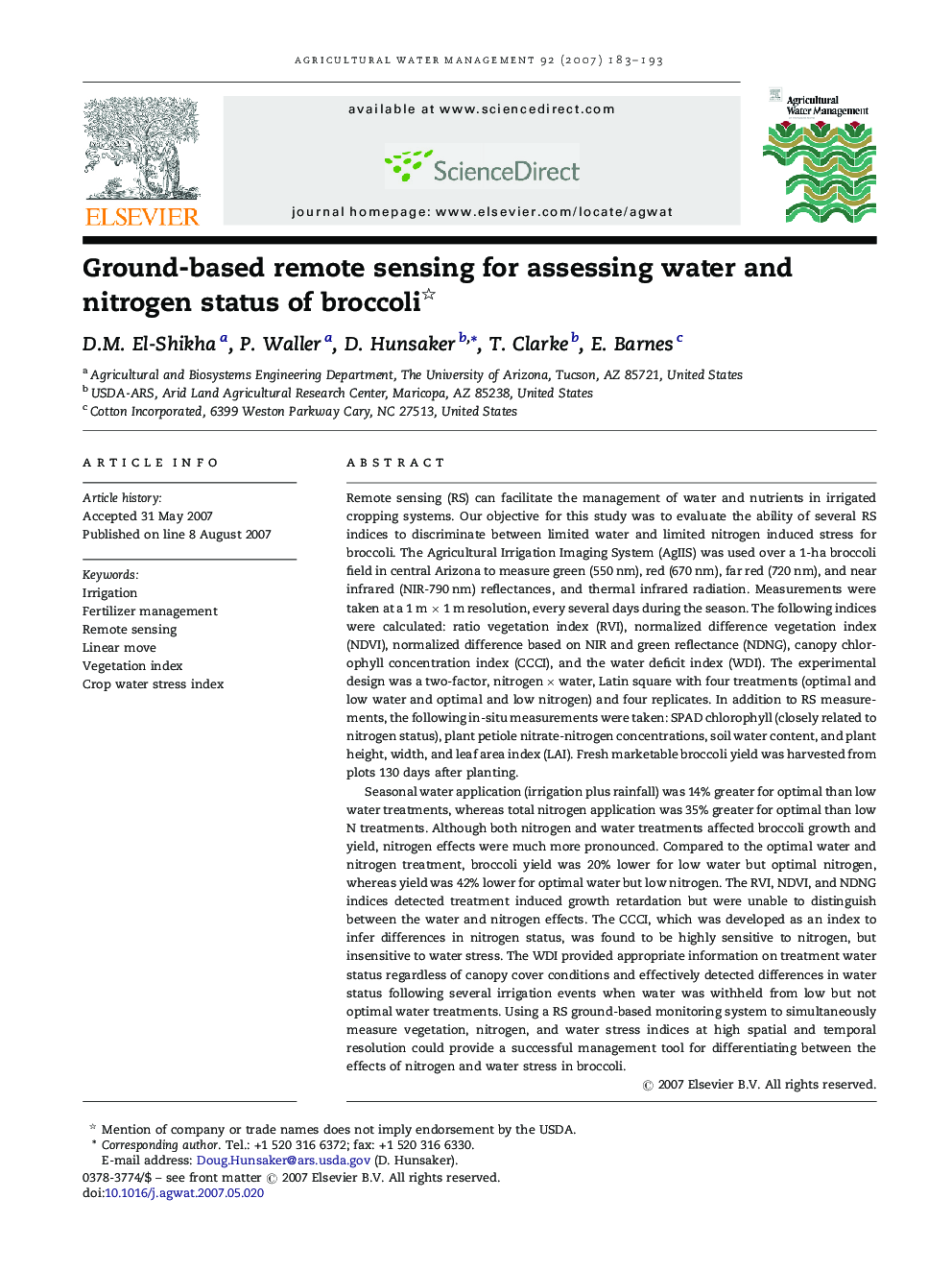| کد مقاله | کد نشریه | سال انتشار | مقاله انگلیسی | نسخه تمام متن |
|---|---|---|---|---|
| 4480350 | 1316488 | 2007 | 11 صفحه PDF | دانلود رایگان |

Remote sensing (RS) can facilitate the management of water and nutrients in irrigated cropping systems. Our objective for this study was to evaluate the ability of several RS indices to discriminate between limited water and limited nitrogen induced stress for broccoli. The Agricultural Irrigation Imaging System (AgIIS) was used over a 1-ha broccoli field in central Arizona to measure green (550 nm), red (670 nm), far red (720 nm), and near infrared (NIR-790 nm) reflectances, and thermal infrared radiation. Measurements were taken at a 1 m × 1 m resolution, every several days during the season. The following indices were calculated: ratio vegetation index (RVI), normalized difference vegetation index (NDVI), normalized difference based on NIR and green reflectance (NDNG), canopy chlorophyll concentration index (CCCI), and the water deficit index (WDI). The experimental design was a two-factor, nitrogen × water, Latin square with four treatments (optimal and low water and optimal and low nitrogen) and four replicates. In addition to RS measurements, the following in-situ measurements were taken: SPAD chlorophyll (closely related to nitrogen status), plant petiole nitrate-nitrogen concentrations, soil water content, and plant height, width, and leaf area index (LAI). Fresh marketable broccoli yield was harvested from plots 130 days after planting.Seasonal water application (irrigation plus rainfall) was 14% greater for optimal than low water treatments, whereas total nitrogen application was 35% greater for optimal than low N treatments. Although both nitrogen and water treatments affected broccoli growth and yield, nitrogen effects were much more pronounced. Compared to the optimal water and nitrogen treatment, broccoli yield was 20% lower for low water but optimal nitrogen, whereas yield was 42% lower for optimal water but low nitrogen. The RVI, NDVI, and NDNG indices detected treatment induced growth retardation but were unable to distinguish between the water and nitrogen effects. The CCCI, which was developed as an index to infer differences in nitrogen status, was found to be highly sensitive to nitrogen, but insensitive to water stress. The WDI provided appropriate information on treatment water status regardless of canopy cover conditions and effectively detected differences in water status following several irrigation events when water was withheld from low but not optimal water treatments. Using a RS ground-based monitoring system to simultaneously measure vegetation, nitrogen, and water stress indices at high spatial and temporal resolution could provide a successful management tool for differentiating between the effects of nitrogen and water stress in broccoli.
Journal: Agricultural Water Management - Volume 92, Issue 3, 16 September 2007, Pages 183–193